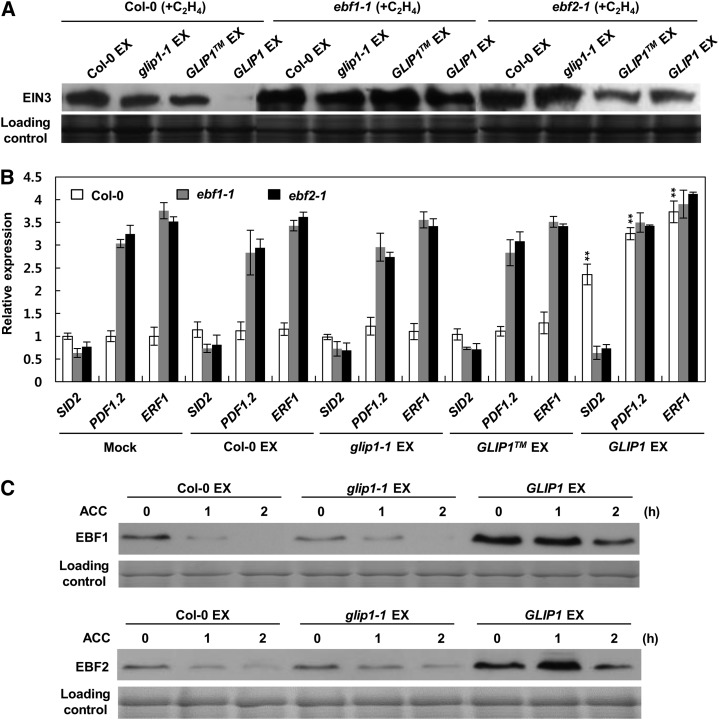Figure 5.
Petiole exudates of 35S:GLIP1 plants trigger EIN3 degradation via EBF1/EBF2. A, Immunoblot analysis of EIN3 in Col-0, ebf1-1, and ebf2-1 plants in response to petiole exudates (EX). Four-day-old seedlings were treated with 10 μL of exudates (0.3 μg μL−1) and kept for 12 h in 10 µL L−1 ethylene. B, Expression analysis of SID2, ERF1, and PDF1.2 in Col-0, ebf1-1, and ebf2-1 plants in response to petiole exudates. Total RNAs were extracted from 4-week-old plants infiltrated with 10 μL of exudates (0.3 μg μL−1) for 24 h and used for quantitative real-time PCR analysis. The values represent means ± sd from three independent experiments. Asterisks indicate significant differences from the mock treatments (Student’s t test, **P < 0.01). C, Immunoblot analysis of EBF1/EBF2 in 35S:EBF1-TAP and 35S:EBF2-TAP plants in response to petiole exudates. Four-day-old seedlings were pretreated with 10 μL of exudates (0.3 μg μL−1) for 4 h and then treated with 10 μm ACC for the indicated times. For A and C, protein samples were separated by SDS-gel electrophoresis and subjected to western-blot analysis with anti-EIN3 (A) or anti-MYC (C) antibody.

